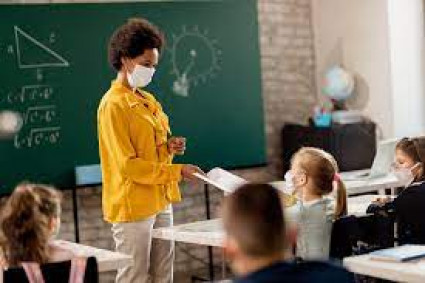
Habits are the actions we do repeatedly, often without even thinking about them. They play a significant role in our daily lives and can have a big impact on our well-being and success. In Class 1, students begin to understand the concepts of good and bad habits.
Good Habits:
Good habits are actions that are beneficial for our health, learning, and relationships. Brushing our teeth, washing our hands, and eating fruits and vegetables are examples of good habits that keep us healthy. Reading books, listening to our teachers, and being kind to our friends are also positive habits that help us learn and build strong friendships. These habits create a positive impact on our lives and make us responsible and caring individuals.
Benefits of Good Habits:
Improved Health: Good habits like eating nutritious foods, getting regular exercise, and maintaining proper hygiene contribute to overall physical well-being.
Enhanced Learning: Establishing habits such as listening attentively, completing homework, and reading regularly can lead to better academic performance and improved learning outcomes.
Time Management: Good habits help in organizing tasks and time efficiently, reducing stress and increasing productivity.
Strong Relationships: Kindness, sharing, and empathy are habits that promote positive interactions and build strong relationships with peers and family members.
Self-Discipline: Practicing good habits requires self-control and discipline, which are valuable life skills for achieving goals and success.
Positive Mindset: Habits like expressing gratitude, staying positive, and embracing challenges foster a positive mindset that can help navigate life's ups and downs.
Personal Growth: Cultivating good habits encourages continuous self-improvement, leading to personal growth and development.
Confidence: Successfully adhering to positive habits boosts self-confidence, as accomplishments reinforce a sense of capability.
Healthier Lifestyle: Good habits contribute to a healthier lifestyle, reducing the risk of chronic illnesses and promoting longevity.
Role Modeling: Demonstrating good habits serves as a positive example for others, encouraging them to adopt similar behaviors.
Happiness: Engaging in activities that bring joy, such as pursuing hobbies or spending quality time with loved ones, can be considered good habits that enhance happiness.
Bad Habits:
On the other hand, bad habits are actions that can harm us or others. These habits can be tricky to break, but it's important to recognize them and work on replacing them with good habits. Skipping meals, spending too much time watching screens, and not doing homework are examples of bad habits that can affect our health and learning.
Creating Positive Habits:
Teenager age is time to start forming positive habits that can last a lifetime. Teachers, parents, play a crucial role in guiding students to make good choices. Setting routines for brushing teeth, eating healthy meals, and reading books can help turn these actions into positive habits. Encouraging acts of kindness, sharing, and active participation in school activities can promote positive behaviors and attitudes.
Identifying and Changing Habits:
Understanding the difference between good and bad habits empowers students to identify and evaluate their own behaviors. It's important to remember that changing habits takes time and effort. By focusing on one habit at a time and rewarding ourselves for making positive changes, we can gradually replace bad habits with good ones.
In conclusion, the topic of good and bad habits in lays the groundwork for developing essential life skills. By learning about and practicing positive habits, young students begin to make choices that contribute to their health, happiness, and success. Teachers, parents, and caregivers play a vital role in nurturing these habits, creating a positive impact on the students' lives now and in the future.


